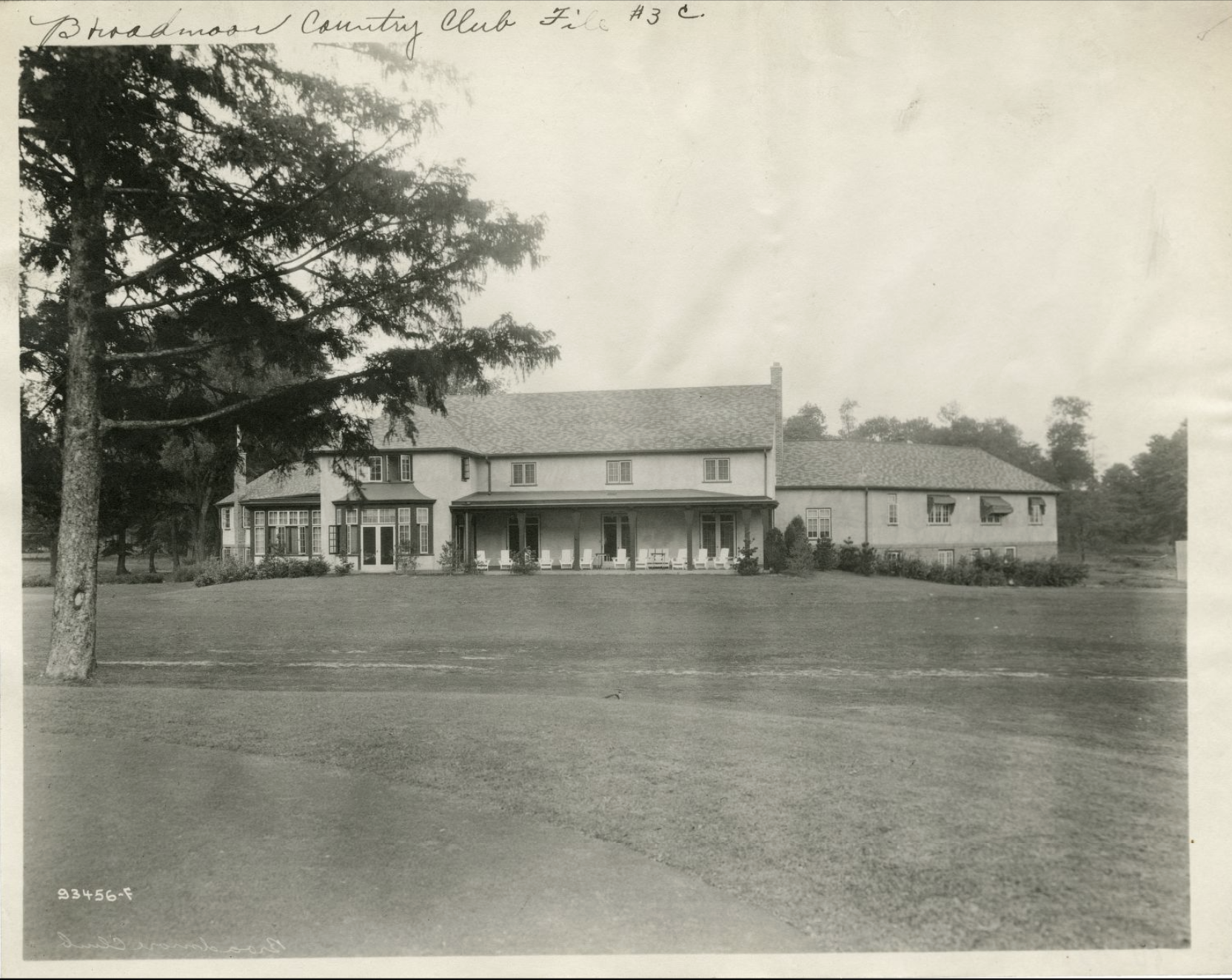In 1922, several Jewish businessmen organized a social and sporting club for the Jewish community whose antisemitic exclusion from existing country clubs in Indianapolis spurred the project.
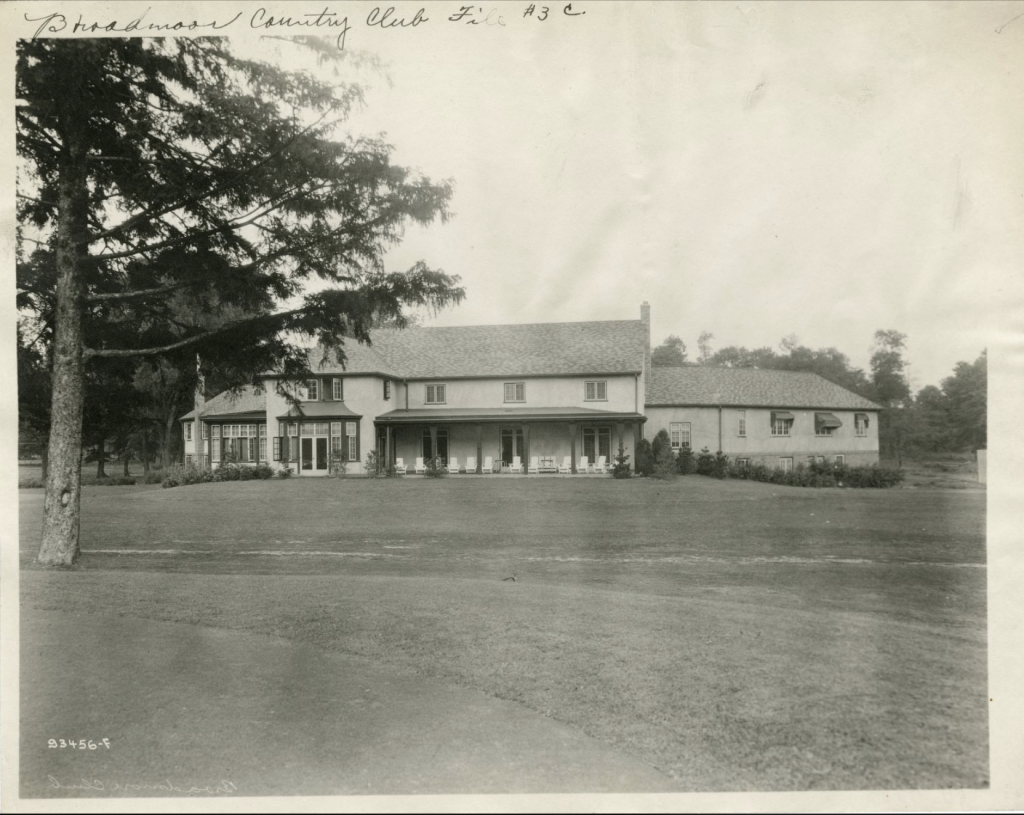
One hundred and twenty-five members of the Jewish community invested $1,000 each toward the purchase of a 160-acre tract of land from Frank and John Fox as the future site of the Broadmoor Country Club. The land included a 40-acre grove and a 160-acre tract located along the newly paved and at the 54th Street stop of the Lafayette line. The members envisioned transforming the collection of grass and hay fields into tennis courts, a premiere 18-hole golf course, a clubhouse, and children’s playgrounds.
Albert M. Rosenthal served as the first president of Broadmoor Country Club. On Tuesday, June 6, 1922, he and other officers of the club filed articles of incorporation with a capitalization of $200,000 and a charter membership of 125 people.
On September 10, 1923, several Jewish businessmen formed the Broadmoor Realty Company, a real estate holding company that financed the construction of a clubhouse and golf course through the issuance of $250,000 in capital stock. Club members subscribed to all the capital stock.
The Broadmoor golf course formally opened on July 4, 1924, to its members. World-renowned Scottish golf course designer Donald Ross laid out the 18-hole course, which featured a semi-circle formation near the clubhouse and a 400-foot well to water the greens.
Ross’s master plan called for defined routing between golf holes, intricate green complexes, extensive bunkering, and an extremely low degree of alteration. Essentially, Ross created a links course that uses a natural and open layout on sandy soil with few-to-no trees on a course of thick, rough grass that intentionally punishes the player through heavy exposure to wind. He also introduced a variety of creeping bent grass as another defining feature that not only differentiated Broadmoor holes from each other but also set them apart from other country clubs in the city (see ).
Almost all of the Broadmoor Country Club facilities formally opened on November 26, 1924. The clubhouse, with its 250-person capacity dining room opened in January 1925. Built in an English manor style of brick, rough stucco, and half-timber, with a tinned shingle roof, the clubhouse’s proximity to the golf course made it unique among other country clubs in the city.
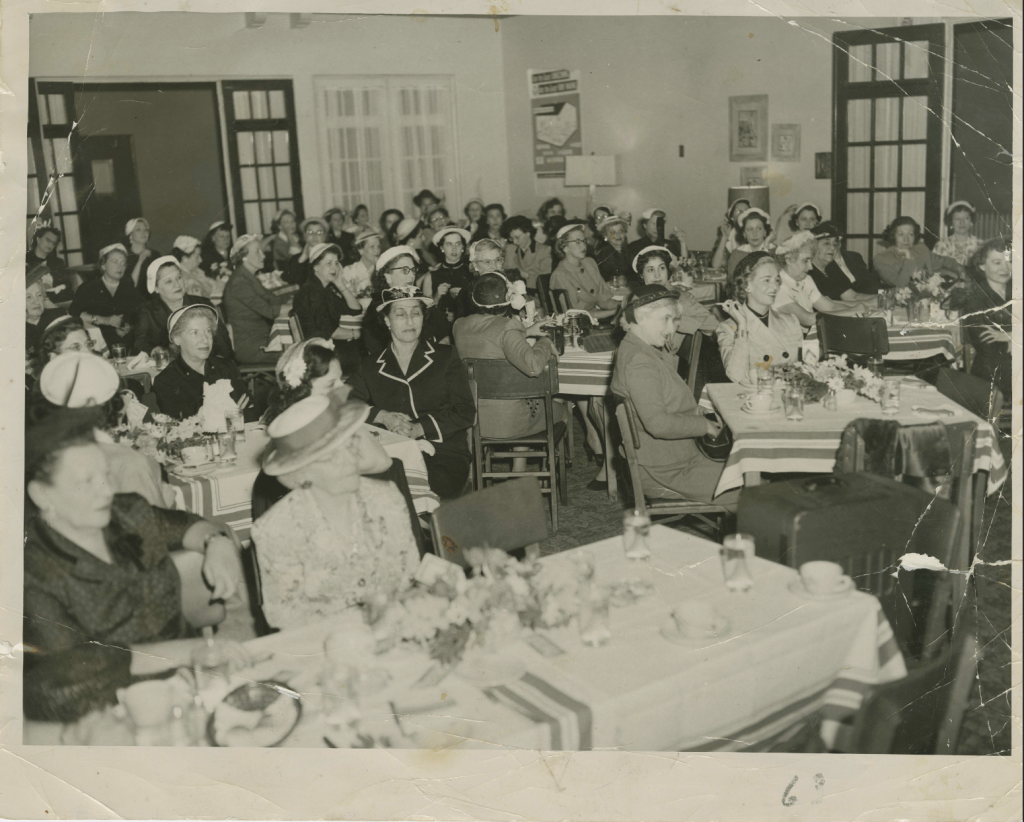
The club improved its facilities as membership increased. Its original swimming pool opened in 1938 but was later replaced in 1955. Throughout the 1940s and 1950s, a large-scale tree-planting campaign altered the golf course from its original links style to a parkland course with an abundance of trees. A new clubhouse opened on October 17, 1956. With an initiation fee of $2,700 (about $28,000 in 2023), the club boasted roughly 325 members in 1960.
Twenty years later in 1980, the club faced possible closure due to dwindling membership. To avoid shuttering the club, the board elected to admit non-Jewish members. An aggressive membership drive nearly doubled the number of members. The club, however, retained its Jewish legacy, hosting several Jewish events and closing the club during High Holy Days.
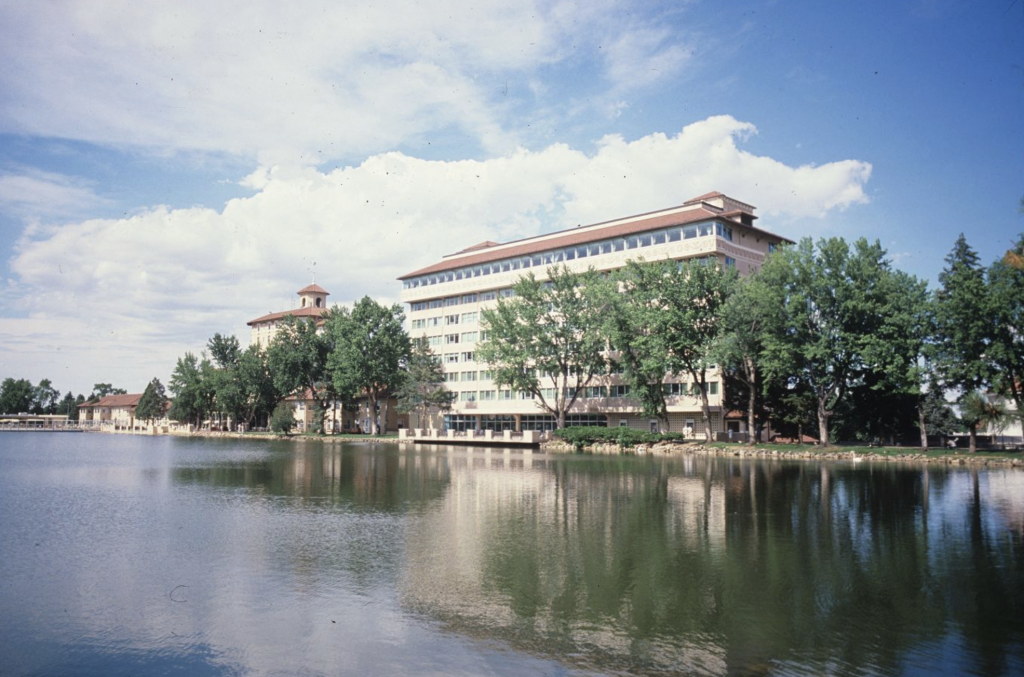
Over the years, Broadmoor hosted a multitude of golf tournaments, including the Indiana State Amateur Tournament and the U.S. Open qualifiers for both men and women. Notably, Broadmoor hosted the first six editions of the GTE North Classic, now the Comfort Classic, on the Champions Tour from 1988 to 1993. The course’s allure has brought many of the greatest golfers in history to play the course, including Arnold Palmer, Chi Chi Rodriguez, Raymond Floyd, and Gary Player, who won the inaugural GTE Classic in 1988.
By the late 1990s, Broadmoor’s golf course had fallen in the rankings of premier courses. In 1997, industry-standard Golf Week Magazine ranked the course number 79 in its first listing of the top 100 Classic Courses built before 1960. The course fell to number 89 the following year and failed to make the list in 1999. In response, Broadmoor hired renowned golf course architect Tom Doak in 1999 to develop a Master Plan to restore the golf course to its original Ross design. Doak’s plan called for a state-of-the-art irrigation system, restoration of the fairways and greens, some bunker work, and the removal of an unspecified number of trees that had shrunk the corridors of play beyond Ross’ intent.
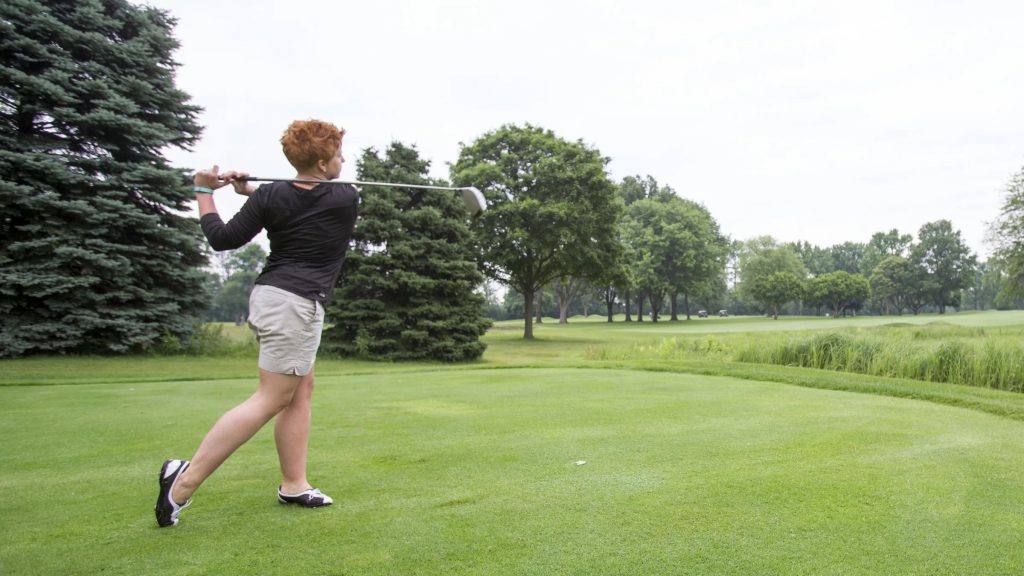
Moving into the 21st century, Broadmoor faced some of the same challenges as other clubs nationwide. Dwindling interest in golf, the perception of country clubs as elitist, and necessary facility upgrades have forced clubs, including Broadmoor, to adopt strategies to boost the attractiveness and inclusiveness of club membership. The loss of $500,000 in revenue in 2013 prompted the changes.
In response, Broadmoor developed a long-term vision for the club during its 2019 strategic planning year. The plan aimed to adopt a range of family-friendly programming and provide opportunities to build social relationships. Renovations to the clubhouse and tennis courts, with the addition of pickleball courts; programming for Junior golf; family fun events; and a refreshed menu were some of the changes.
In 2020, Broadmoor aimed to further restore the golf course to its original Ross design. The club hired golf course architect Bruce Hepner, who had worked with Tom Doak during the first phase of the restoration in the early 2000s. By 2022, Hepner rebuilt and repositioned each of the 135 bunkers, adjusted the fairway and green edges, and thinned almost 300 trees to remedy the extra penalty created through obstructed corridors of play. Golf Week ranked the course as one of the top 10 private courses in the state of Indiana in 2023.

Help improve this entry
Contribute information, offer corrections, suggest images.
You can also recommend new entries related to this topic.
